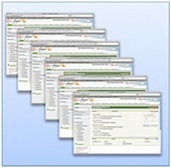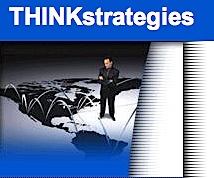
This morning I was running some reports and adding information about customers in our hosted CRM and had to click through no less than 5 page refreshes just to change a single field in each customer account. Is it just me or do we waste too much of our lives waiting for a new page to load in the browser? That’s not an isolated example. It takes just as many page refreshes to do similar tasks throughout the CRM. Take the calendar for instance, to change the start time of a meeting in your calendar it takes 6 page refreshes. Allow me to detail the insanity:

- open your calendar
- go to the day view and click on the appointment you want to change
- view the full appointment, click the edit button
- change the field and click save
- see the appointment again
- back to the day view
I’m not just picking on our CRM, the problem exists all over the Internet.
For me, Google Maps first showed me what the browser could do with rich interactivity. You know what I’m talking about—no more clicking and refreshing, just drag and drop to move the map. This interactivity is much more intuitive and makes online maps much more useful for me. I was already used to this type of interactivity inside of desktop applications, but not on the web.
Even though interactivity like Google Maps is far more intuitive and user friendly, it is still largely absent from the sites we use every day. When you consider the effort involved in adding interactivity, it is no wonder implementations have been limited and require large development projects. There are two main obstacles that I see keeping people from adding more pervasive interactivity:
- Complexity and cost
- Security
On the complexity side of the issue, there are many moving pieces in adding rich interactivity. Generally, the most time consuming and complex issue is ensuring cross-browser compatibility. Every browser has it’s own idiosyncrasies in running JavaScript; pages that behave one way in Internet Explorer are very different in Firefox. On top of that, the synchronization between the client and server and the connectivity to multiple data sources adds a whole new layer of complexity. This complexity adds to the development time and the size of the development team, also known as cost.
On the security front, traditional approaches push a lot of the application execution and data connectivity to the client. This approach exposes too much business logic and data on the client and opens the opportunity for malicious individuals to exploit these holes.
At Bungee Connect, we have been working to make rich interactivity a reality by removing the complexity involved in developing a web application. Bungee Connect removes the need to learn multiple technologies and languages to develop web applications. With Bungee Connect, there is no need to write any Javascript or worry about cross-browser compatibility. Also, the Bungee Connect architecture leaves the application logic on the sever, minimizing the attack surface of an application. Data is also kept secure by leaving the connection to the data source at the server and pushing only the data being displayed down to the client.
Just like my experience with Google Maps, when I first saw Bungee Connect in action I could see new user experiences would be possible on the web once you move beyond the page refresh model. You can read more about the Bungee Connnect approach here.
What do you think–is the move to a richer web experience long overdue?
-Brad
 Overview
Overview




